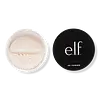What's inside
What's inside
 Key Ingredients
Key Ingredients

 Benefits
Benefits

No benefits
 Concerns
Concerns

 Ingredients Side-by-side
Ingredients Side-by-side

Mica
Cosmetic ColorantKaolin
AbrasiveSilica
AbrasiveAluminum Starch Octenylsuccinate
AbsorbentMethyl Methacrylate Crosspolymer
Pentaerythrityl Tetraisostearate
EmollientCellulose
AbsorbentSqualane
EmollientSynthetic Wax
AbrasiveLauroyl Lysine
Skin ConditioningSorbitan Isostearate
EmulsifyingTrihydroxystearin
Skin ConditioningSilica Dimethyl Silylate
EmollientDimethicone
EmollientDicaprylyl Carbonate
EmollientMagnesium Myristate
Glyceryl Caprylate
Emollient1,2-Hexanediol
Skin ConditioningMethicone
EmollientEthylhexylglycerin
Skin ConditioningTriethoxycaprylylsilane
Iron Oxides
CI 77007
Cosmetic ColorantCI 15850
Cosmetic ColorantCI 19140
Cosmetic ColorantMica, Kaolin, Silica, Aluminum Starch Octenylsuccinate, Methyl Methacrylate Crosspolymer, Pentaerythrityl Tetraisostearate, Cellulose, Squalane, Synthetic Wax, Lauroyl Lysine, Sorbitan Isostearate, Trihydroxystearin, Silica Dimethyl Silylate, Dimethicone, Dicaprylyl Carbonate, Magnesium Myristate, Glyceryl Caprylate, 1,2-Hexanediol, Methicone, Ethylhexylglycerin, Triethoxycaprylylsilane, Iron Oxides, CI 77007, CI 15850, CI 19140
 Reviews
Reviews

Ingredients Explained
These ingredients are found in both products.
Ingredients higher up in an ingredient list are typically present in a larger amount.
Mica is a naturally occurring mineral used to add shimmer and color in cosmetics. It can also help improve the texture of a product or give it an opaque, white/silver color.
Serecite is the name for very fine but ragged grains of mica.
This ingredient is often coated with metal oxides like titanium dioxide. Trace amounts of heavy metals may be found in mica, but these metals are not harmful in our personal products.
Mica has been used since prehistoric times throughout the world. Ancient Egyptian, Indian, Greek, Roman, Aztec, and Chinese civilizations have used mica.
Learn more about MicaSilica, also known as silicon dioxide, is a naturally occurring mineral. It is used as a fine, spherical, and porous powder in cosmetics.
Though it has exfoliant properties, the function of silica varies depending on the product.
The unique structure of silica enhances the spreadability and adds smoothness, making it a great texture enhancer.
It is also used as an active carrier, emulsifier, and mattifier due to its ability to absorb excess oil.
In some products, tiny microneedles called spicules are made from silica or hydrolyzed sponge. When you rub them in, they lightly polish away dead skin layers and enhance the penetration of active ingredients.
Learn more about SilicaThis ingredient is a combination of red, black, and yellow iron oxide pigments. This combination of colors is usually found in foundation, because it results in a "skin" color.